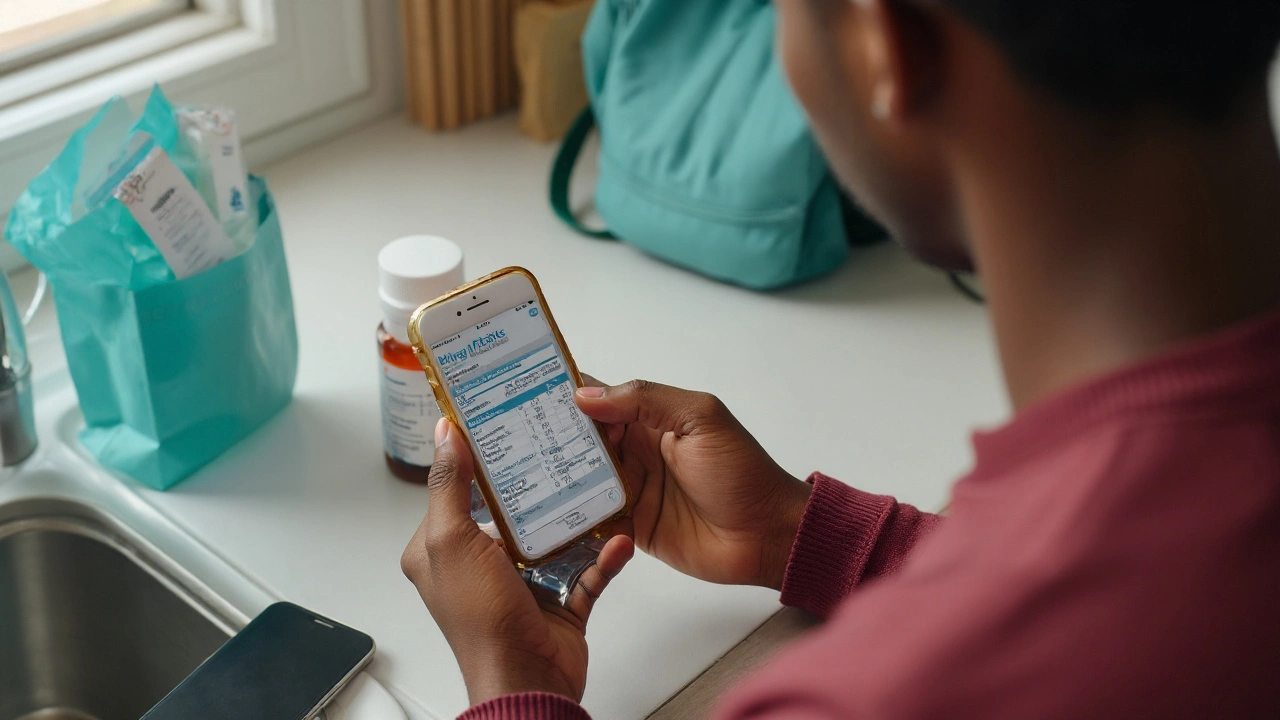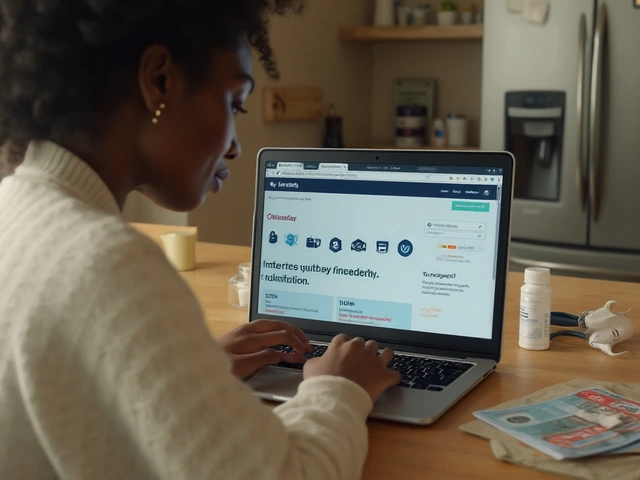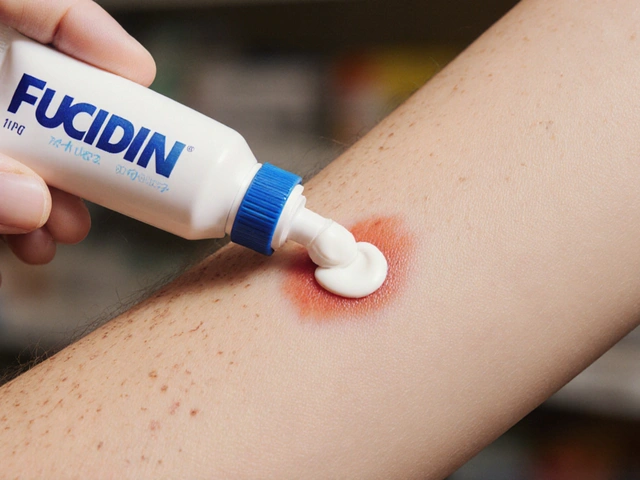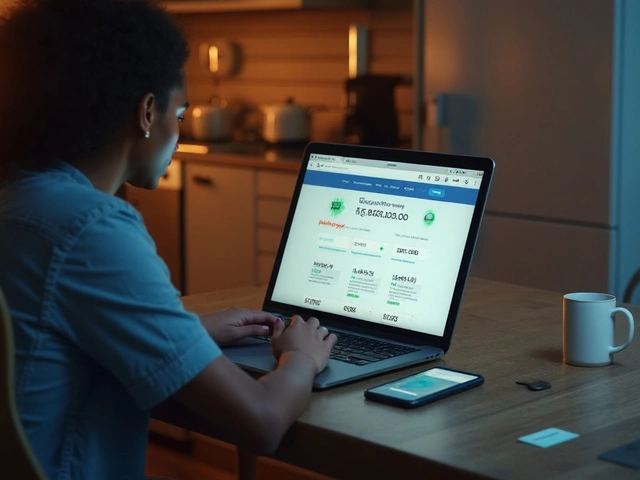You clicked because you want a cheap, legit bottle of acetaminophen online without getting ripped off or risking your health. Good. Here’s the short version: you can usually score U.S.-made, store-brand acetaminophen for 1-3 cents per 500 mg caplet, shipped-if you shop smart and avoid sketchy marketplaces. I’m going to show you the exact specs to pick, what a fair price looks like in 2025, how to avoid fakes, and when acetaminophen is (and isn’t) the right choice. I live in Seattle and keep a bottle in my hiking pack year-round, so I care about cost and safety as much as you do.
What to buy (strengths, forms, and safe-use basics)
If your goal is pain or fever relief with minimal stomach irritation, acetaminophen is the workhorse OTC option in the U.S. It’s the same active ingredient as Tylenol-just without the brand price. Outside the U.S., it’s called paracetamol.
buy generic acetaminophen online confidently by knowing exactly what you need before you add to cart. Here’s the quick chooser:
- Adult tablets/caplets: Most people buy 500 mg (often labeled “Extra Strength”). Good for headaches, dental pain, fever. Typical dose: 500-1,000 mg every 6 hours as needed.
- Regular strength: 325 mg tablets. Handy if you’re sensitive to meds or want finer dose control.
- Extended-release 650 mg (arthritis): For longer relief; don’t split/crush; follow the label closely.
- Liquids/chewables for kids: Measured in mg per mL. Always use the provided dosing device.
- Gels/rapid release: Dissolve faster; may cost a bit more. Worth it if speed matters to you.
Safe adult dosing (U.S.): Follow the Drug Facts label. Typical adult maximum is 3,000 mg per 24 hours on many OTC labels, and never exceed 4,000 mg per 24 hours under any circumstances. If you have liver disease, drink 3 or more alcoholic drinks per day, are under 50 kg (110 lb), or are 65+, use less and talk to a clinician before use. These limits come straight from U.S. OTC labeling guidance and FDA communications on liver safety.
Kids’ dosing: Standard guidance (American Academy of Pediatrics) is 10-15 mg/kg per dose every 4-6 hours, max 5 doses in 24 hours. Do not dose infants or toddlers without checking weight-based dosing and reading the exact Drug Facts on your specific bottle. When in doubt, call your pediatrician.
What acetaminophen doesn’t do: It’s not an anti-inflammatory. If your main issue is inflammation (sprain, tendonitis), ibuprofen or naproxen may work better-unless you can’t take NSAIDs. Always check with a clinician if you have kidney disease, GI ulcers, are in late pregnancy, or take blood thinners.
Avoid accidental overdose: The biggest risk with acetaminophen is stacking it with combo products. Cold/flu syrups, “PM” pain relievers, and many prescription pain meds also contain acetaminophen (sometimes labeled “APAP”). Read every label and add up your total milligrams.
Look for these on the label: Active ingredient “Acetaminophen,” strength (e.g., 500 mg), quantity, lot number, expiration date, tamper-evident seal, and a U.S. address for the manufacturer or distributor. Generics should list the same active ingredient and dosage as the brand.
How to get the lowest online price (2025)
Here’s what a fair U.S. price looks like this year, based on the big-box/store-brand market. Prices shift weekly, but these ranges will help you spot a bargain from a mile away.
| Form & Strength | Typical Count | Common 2025 Price Range (USD) | Approx. Cost per 500 mg | Notes |
|---|---|---|---|---|
| Caplets, 500 mg (store brand) | 100-500 | $3.50-$12.00 | $0.01-$0.03 | Bulk packs usually best value; watch shipping fees. |
| Tablets, 325 mg (store brand) | 100-300 | $3.00-$9.00 | $0.015-$0.04 (normalized) | Cheaper upfront, slightly higher per mg. |
| Extended-release, 650 mg | 100-200 | $6.00-$16.00 | $0.02-$0.05 | Costs more for longer action; don’t split. |
| Children’s liquid (160 mg/5 mL) | 4-8 oz | $3.50-$8.00 | $0.02-$0.05 per 160 mg | Check dosing device included. |
| Brand Tylenol 500 mg | 100-200 | $8.00-$18.00 | $0.04-$0.09 | Same active ingredient; you’re paying for brand. |
Target price: If you can land 500 mg store-brand caplets for 1-2 cents each delivered, that’s excellent in 2025. Under 3 cents is still a good buy. If it’s 4-6 cents+, you’re either paying for the brand, a small count, or convenience (fast shipping).
Shipping & fees: Many big retailers ship OTC meds free at $25-$35 order thresholds, or free with memberships. If you only need acetaminophen, consider adding household staples to reach the free-shipping minimum. Avoid third-party marketplace sellers that add “handling” fees on OTC meds.
Coupons & subscriptions:
- Clip digital coupons from the retailer’s own product page.
- “Subscribe & save” can shave 5-15% off, but set a reasonable delivery cadence (every 3-6 months) so you don’t stockpile and hit expiration.
- Use HSA/FSA cards if your plan allows OTC. Keep the itemized receipt.
When to buy: Prices spike during cold/flu waves (late fall to early spring). If you see your target price off-season, grab a year’s supply for your household, factoring in expiration dates.
Bulk vs. small bottles: The big bottle wins on unit price, but consider:
- If you use acetaminophen a few times per month, a 100-200 count bottle is plenty before expiry.
- For families, 500-count bottles make sense. Keep a smaller child-resistant travel bottle for day-to-day and refill from the bulk bottle.
- Extended-release and gelcaps almost always cost more per mg. Only pay extra if the benefit matters to you.
Quick math hack: Price per mg = price ÷ (strength × pill count). For a $6 bottle of 500 mg × 200: $6 ÷ (500 × 200) = $0.00006 per mg, or 3 cents per 500 mg tablet.

Buy safely: avoid fakes, pick legit sellers, and use it right
Acetaminophen is OTC, but fake or mishandled OTC meds exist online. Here’s how to avoid problems and protect your liver.
- Stick to U.S. state-licensed pharmacies or major national retailers. Look for seals like the National Association of Boards of Pharmacy’s Digital Pharmacy Accreditation and check the FDA’s BeSafeRx resources by name. The NABP also maintains a “Not Recommended Sites” list.
- Be wary of marketplace third-party sellers. Prefer “sold and shipped by” the retailer itself. Third parties sometimes ship repackaged or past-date goods.
- Price too low? If the per-tablet price is a fraction of the store-brand norm and shipping is international with long delays, pass.
- Packaging check on arrival: Tamper-evident seal intact, clear lot number and expiration date, Drug Facts panel present, UPC intact, tablets uniform in color/shape with no odor beyond mild excipient smell.
- Expiry reality: Potency can slowly drop after expiry dates. Don’t plan around that. It’s cheap-buy fresh stock.
- Storage: Cool, dry place. Avoid car glove boxes and steamy bathrooms. Heat and humidity degrade tablets.
Liver safety rules you shouldn’t break:
- Add up all sources of acetaminophen. Many “PM,” cold/flu, and prescription pain meds include it. If a label says “APAP,” that’s acetaminophen.
- Do not exceed 3,000 mg/day on typical OTC labels; never exceed 4,000 mg/day. If you drink regularly or have liver disease, talk to a clinician about a lower cap or an alternative.
- Don’t mix with heavy alcohol use. The FDA and medicine labels warn about serious liver damage risk.
- If you suspect overdose, seek emergency care right away. Early treatment is critical.
Pregnancy & breastfeeding: Acetaminophen is commonly used in pregnancy at recommended doses, but decisions should be individualized. Ask your OB/midwife before use. For breastfeeding, standard doses are generally considered compatible; confirm with your pediatric clinician or a pharmacist.
Interactions to consider: Warfarin (monitor INR if using regularly), isoniazid, and chronic alcohol use raise liver risk. If you take multiple meds daily, a pharmacist can review for you at no charge.
Returns & guarantees: Many pharmacies don’t accept OTC returns once opened. Check the return policy before you buy, especially if you’re trying an unfamiliar seller. Keep photos of the package and seals until you’ve inspected the contents.
Compare and decide: generic vs Tylenol, acetaminophen vs NSAIDs, and your next steps
Generic vs Tylenol: By law, the generic must have the same active ingredient, strength, dosage form, and bioequivalence as the brand. The difference is branding and sometimes coatings or inactive ingredients. If you have allergies or prefer a certain coating, read the inactive ingredient list. Otherwise, go generic and pocket the savings.
Acetaminophen vs ibuprofen vs naproxen:
- Acetaminophen: Pain/fever relief; gentler on the stomach; not anti-inflammatory.
- Ibuprofen (NSAID): Pain/fever + inflammation relief; avoid with certain GI, kidney, or cardiovascular issues; take with food.
- Naproxen (NSAID): Longer-acting anti-inflammatory; similar cautions as ibuprofen.
When acetaminophen wins: Tension headaches, fever, toothache when NSAIDs upset your stomach, late pregnancy (only under clinician guidance). When NSAIDs may be better: Sprains, menstrual cramps, dental swelling-situations where inflammation drives the pain. You can alternate acetaminophen and ibuprofen in some adult scenarios for short periods, but only if you track doses and keep within daily limits. If that idea is new to you, ask a clinician or pharmacist to map a schedule.
Scenarios & quick picks:
- Budget adult buyer (most people): 500 mg store-brand caplets, 200-500 count. Aim for 1-2 cents per tablet.
- Arthritis: 650 mg extended-release generic if you want fewer doses. Don’t split.
- Kids at home: Children’s acetaminophen liquid 160 mg/5 mL. Buy one bottle for home, one for the overnight bag. Keep the dosing syringe labeled.
- Travelers: Small 10-50 count travel bottle to avoid carrying a giant rattling jar. Refill from bulk.
- Sensitive stomach or pill-swallowing issues: Caplets with a smooth coating or gelcaps; liquids if needed.
Decision checklist before you click “Buy”:
- Did you confirm the strength (325, 500, or 650 mg) and count you actually need?
- Is the per-tablet price at or under your target (≤3 cents for 500 mg is good in 2025)?
- Is the seller a licensed U.S. pharmacy or well-known retailer (not a random third-party)?
- Are shipping fees reasonable and arrival time acceptable?
- Does the return policy make sense for OTC meds?
FAQ
- How many 500 mg tablets can I take in a day? Follow the label. Many OTC labels cap total at 3,000 mg/day. Never exceed 4,000 mg/day. If you need more than a few days of dosing, call your clinician.
- Can I use acetaminophen for hangovers? If you drank heavily, be cautious-alcohol plus acetaminophen strains the liver. Hydrate, rest, and if you choose to dose, keep it low and infrequent. When in doubt, talk to a clinician.
- Is “paracetamol” the same as acetaminophen? Yes-same drug, different name (used outside the U.S.).
- Can I take acetaminophen with ibuprofen? They work differently and can be alternated in some adult cases. Keep strict track of each drug’s timing and dose and do not exceed daily limits. If you’re not sure, ask a pharmacist for a quick schedule.
- Why do some labels say 3,000 mg max and others mention 4,000 mg? Manufacturers often set a 3,000 mg cap for added safety. The absolute line you should never cross is 4,000 mg/day, and many people should stay well under that.
- Do generics work as fast as brand? Generics must be bioequivalent to brand in the U.S. Coatings or shapes can differ, but pain relief should be comparable.
- What if my tablets look chipped or smell odd? Don’t use them. Photograph the bottle, lot, and damage; contact the seller for a replacement/refund.
- Can I buy acetaminophen from international sites? For safety and quality control, stick to U.S.-licensed retailers and pharmacies. Importing meds can violate regulations and increases counterfeit risk.
Next steps / Troubleshooting
- I need the absolute cheapest price: Search a couple of major U.S. retailers for 500 mg store-brand 200-500 count. Sort by lowest total price per tablet including shipping. Clip coupons, and add a small household item to hit free shipping if needed.
- Everything’s out of stock before a storm/flu wave: Check curbside pickup from local big-box stores. If still dry, buy 325 mg tablets and adjust the number of tablets per dose according to the label. Do not buy unsealed or repackaged lots.
- I’m dosing a child and can’t find the syringe: Do not use kitchen spoons. Pharmacies will usually give you a free dosing syringe if you ask. Until then, hold off and call your pediatrician.
- I have liver concerns: Ask a clinician if acetaminophen is appropriate and what your personal daily cap should be. You may need lower limits or different pain strategies.
- I took a combo cold medicine-did I double-dose? Add up the acetaminophen mg from each product. If you’re near the daily limit, stop and set a timer for your next safe dose window. If you exceeded the limit or have symptoms like nausea or right-upper abdominal pain, seek care immediately.
- I want anti-inflammatory relief: Consider ibuprofen or naproxen if appropriate for your health status. If you have GI, kidney, or heart issues-or are late in pregnancy-ask first.
- I hate giant bottles rolling around: Buy a small, child-resistant travel bottle and refill from your bulk bottle. Label with strength and expiration date.
Ethical CTA: Choose a state-licensed U.S. online pharmacy or a major national retailer, pick the 500 mg store brand in the count you’ll actually use before expiry, confirm you’re paying around 1-3 cents per tablet delivered, and place your order. On delivery, inspect the seal and label, then stash it somewhere cool and dry. Set a calendar reminder to check your stock before cold/flu season so you’re not panic-buying at bad prices.
Credibility notes: The dosing and safety guidance here aligns with U.S. OTC Drug Facts, FDA liver safety communications on acetaminophen, and pediatric dosing norms from the American Academy of Pediatrics. For pharmacy legitimacy, check resources by name from the National Association of Boards of Pharmacy and the FDA’s BeSafeRx program. If your situation is anything but routine, a 3-minute chat with a pharmacist is free and worth it.






For hiking, keep a small labeled travel bottle and refill from your bulk bottle so you don’t carry a giant jar and you can track doses easily.
Seal it, label strength and expiry, and stash it in an easy-access pocket - super handy when the trailhead gives you a headache.
August 22Nathan Hamer